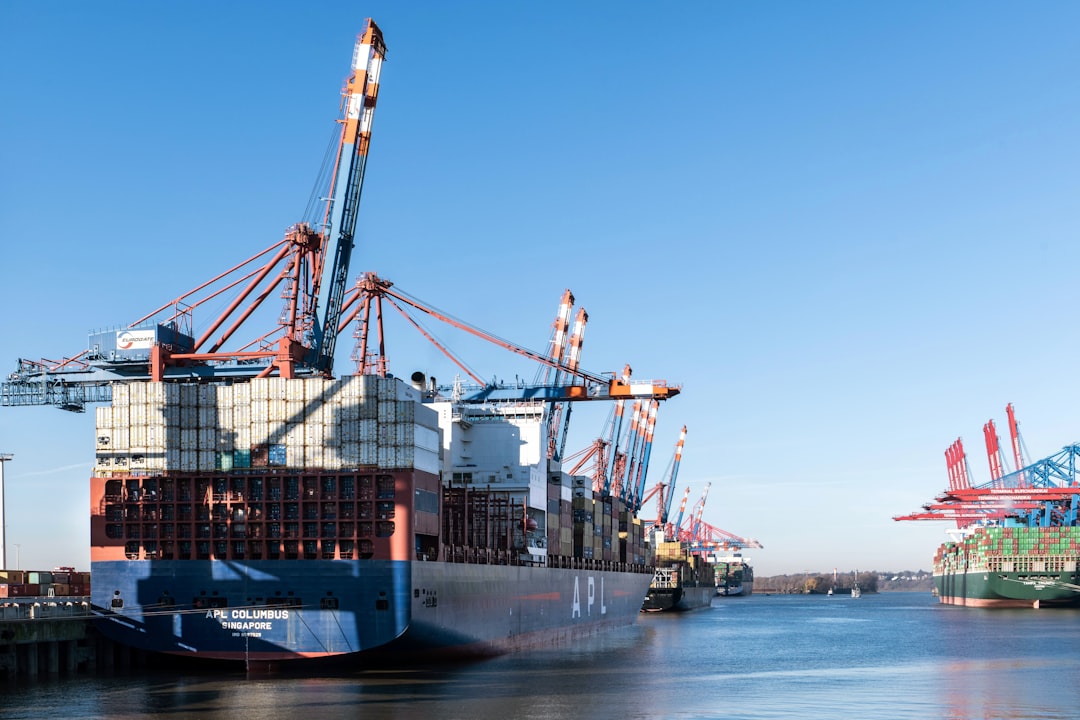In today’s globally interconnected world, efficient logistics are no longer a luxury but a necessity. Successfully navigating the complex interplay between maritime and land transportation is crucial for businesses of all sizes to maintain competitiveness and profitability. This comprehensive guide delves into key strategies for optimizing your logistics operations, ensuring a seamless flow of goods from origin to final destination.
Optimizing Port Operations for Efficient Maritime Logistics
The port serves as a critical juncture in the supply chain, and its efficiency directly impacts overall logistics performance. Effective port operations require a multi-pronged approach. This includes investing in advanced technologies such as automated container handling systems and real-time tracking capabilities. Streamlining customs procedures and paperwork through digitalization can significantly reduce delays. Furthermore, strategic partnerships with port authorities, stevedores, and terminal operators are vital for ensuring smooth cargo handling and minimizing congestion. Careful consideration of vessel scheduling, berth allocation, and yard management contributes to optimizing throughput and minimizing waiting times. Analyzing data to identify bottlenecks and inefficiencies provides the insights needed to implement targeted improvements.
Integrating Land Transportation with Maritime Shipments: A Seamless Transition
The efficient transfer of goods from ship to land transport is a crucial element in minimizing delays and costs. This requires careful planning and coordination between maritime and land-based logistics providers. Choosing the right mode of land transportation – trucking, rail, or a combination – depends on factors such as distance, cargo type, cost, and delivery timelines. Utilizing intermodal transportation, which combines different modes, can often offer significant advantages in terms of cost and efficiency. For example, moving containers by rail to inland distribution centers before trucking them to their final destinations can be more economical and environmentally friendly than trucking the entire distance. Real-time tracking and communication systems allow for continuous monitoring of shipments, enabling proactive problem-solving and preventing delays.
Strategic Warehouse Management for Efficient Inventory Control
Warehousing plays a crucial role in both maritime and land logistics. Effective warehouse management involves optimizing storage space, implementing efficient inventory control systems, and ensuring smooth order fulfillment. Utilizing Warehouse Management Systems (WMS) allows for real-time tracking of inventory levels, automated order picking, and improved accuracy. Strategic warehouse location is also critical; proximity to major transportation hubs can significantly reduce transportation costs and delivery times. Implementing lean warehousing principles, such as minimizing waste and maximizing space utilization, can further enhance efficiency and reduce operational costs. Regular inventory audits help prevent stockouts and overstocking, ensuring optimal inventory levels.
Last-Mile Delivery Optimization: Ensuring Timely and Efficient Final Delivery
The final leg of the journey, last-mile delivery, often presents significant logistical challenges. Optimizing this stage requires a multifaceted approach. This includes route optimization software to determine the most efficient delivery routes, leveraging technology such as GPS tracking and delivery management systems to monitor deliveries in real-time. Careful consideration of delivery windows and customer preferences is crucial for enhancing customer satisfaction. Exploring alternative delivery methods, such as utilizing local delivery networks or crowdsourced delivery services, can improve efficiency and cost-effectiveness, particularly in densely populated areas. Analyzing delivery data to identify recurring issues and optimize processes is essential for continuous improvement.
Leveraging Technology for Enhanced Visibility and Control
Technology plays a transformative role in modern logistics, offering enhanced visibility and control across the entire supply chain. Transportation Management Systems (TMS) provide a centralized platform for managing all aspects of transportation, from planning and execution to tracking and reporting. Real-time tracking systems enable continuous monitoring of shipments, providing immediate alerts in case of delays or disruptions. Data analytics tools provide insights into operational performance, identifying areas for improvement and enabling data-driven decision-making. Blockchain technology offers the potential for increased transparency and security, enhancing traceability and reducing the risk of fraud. Investing in robust technology infrastructure is essential for optimizing maritime and land logistics in today’s competitive landscape.
By implementing these strategies, businesses can create a truly seamless and efficient logistics operation, minimizing costs, improving delivery times, and enhancing customer satisfaction. The key to success lies in integrated planning, leveraging technology, and fostering strong partnerships across the entire supply chain.
SEO-Friendly Tags:
- Maritime Logistics
- Land Logistics
- Supply Chain Management
- Logistics Optimization
- Freight Transportation




